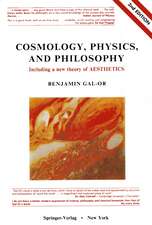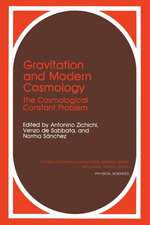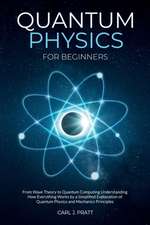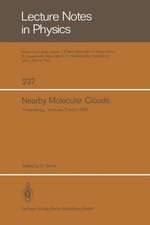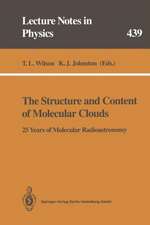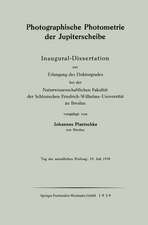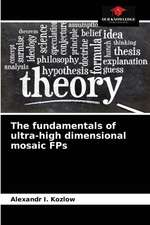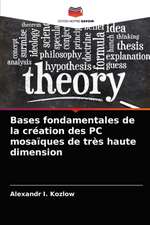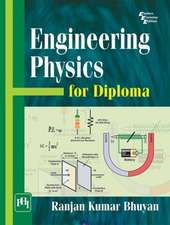Multimessenger Astronomy: Astronomers' Universe
Autor John Etienne Beckmanen Limba Engleză Paperback – 27 iul 2021
In the second decade of the twenty-first century astronomy has seen the beginnings of a revolution. After centuries when all our information about the Universe has come via electromagnetic waves, now several entirely new ways of exploring it have emerged. The most spectacular has been the detection of gravitational waves in 2015, but astronomy also uses neutrinos and cosmic ray particles to probe processes in the centres of stars and galaxies.
The book is strongly oriented towards measurement and technique. Widely illustrated with colourful pictures of instruments, their creators and astronomical objects, it is backed with descriptions of theunderlying theories and concepts, linking predictions, observations and experiments. The thread is largely historical, although obviously it cannot be encyclopaedic. Its point of departure is the beginning of the twentieth century and it aims at being as complete as possible for the date of completion at the end of 2020.
The book addresses a wide public whose interest in science is served by magazines like Scientific American: lively, intelligent readers but without university studies in physics.
Din seria Astronomers' Universe
-
 Preț: 210.44 lei
Preț: 210.44 lei -
 Preț: 207.15 lei
Preț: 207.15 lei -
 Preț: 195.53 lei
Preț: 195.53 lei -
 Preț: 254.90 lei
Preț: 254.90 lei -
 Preț: 259.27 lei
Preț: 259.27 lei -
 Preț: 212.88 lei
Preț: 212.88 lei -
 Preț: 256.41 lei
Preț: 256.41 lei -
 Preț: 264.35 lei
Preț: 264.35 lei -
 Preț: 259.08 lei
Preț: 259.08 lei -
 Preț: 227.61 lei
Preț: 227.61 lei -
 Preț: 277.98 lei
Preț: 277.98 lei -
 Preț: 305.70 lei
Preț: 305.70 lei -
 Preț: 253.11 lei
Preț: 253.11 lei -
 Preț: 216.60 lei
Preț: 216.60 lei -
 Preț: 272.24 lei
Preț: 272.24 lei -
 Preț: 330.75 lei
Preț: 330.75 lei -
 Preț: 179.00 lei
Preț: 179.00 lei -
 Preț: 289.83 lei
Preț: 289.83 lei -
 Preț: 160.03 lei
Preț: 160.03 lei -
 Preț: 200.80 lei
Preț: 200.80 lei -
 Preț: 255.97 lei
Preț: 255.97 lei -
 Preț: 242.58 lei
Preț: 242.58 lei -
 Preț: 262.55 lei
Preț: 262.55 lei -
 Preț: 257.08 lei
Preț: 257.08 lei -
 Preț: 187.82 lei
Preț: 187.82 lei -
 Preț: 225.19 lei
Preț: 225.19 lei -
 Preț: 207.64 lei
Preț: 207.64 lei -
 Preț: 104.35 lei
Preț: 104.35 lei -
 Preț: 188.94 lei
Preț: 188.94 lei -
 Preț: 270.49 lei
Preț: 270.49 lei -
 Preț: 212.01 lei
Preț: 212.01 lei -
 Preț: 169.08 lei
Preț: 169.08 lei -
 Preț: 210.01 lei
Preț: 210.01 lei -
 Preț: 208.26 lei
Preț: 208.26 lei -
 Preț: 253.98 lei
Preț: 253.98 lei -
 Preț: 180.12 lei
Preț: 180.12 lei -
 Preț: 254.90 lei
Preț: 254.90 lei -
 Preț: 247.82 lei
Preț: 247.82 lei -
 Preț: 207.39 lei
Preț: 207.39 lei -
 Preț: 208.70 lei
Preț: 208.70 lei -
 Preț: 214.86 lei
Preț: 214.86 lei -
 Preț: 188.94 lei
Preț: 188.94 lei -
 Preț: 194.65 lei
Preț: 194.65 lei -
 Preț: 277.34 lei
Preț: 277.34 lei -
 Preț: 187.15 lei
Preț: 187.15 lei -
 Preț: 210.93 lei
Preț: 210.93 lei -
 Preț: 212.01 lei
Preț: 212.01 lei
Preț: 261.06 lei
Nou
Puncte Express: 392
Preț estimativ în valută:
49.96€ • 51.86$ • 41.66£
49.96€ • 51.86$ • 41.66£
Carte disponibilă
Livrare economică 04-18 martie
Preluare comenzi: 021 569.72.76
Specificații
ISBN-13: 9783030683719
ISBN-10: 3030683710
Pagini: 390
Ilustrații: XXIV, 390 p. 219 illus., 193 illus. in color.
Dimensiuni: 155 x 235 x 27 mm
Greutate: 0.58 kg
Ediția:1st ed. 2021
Editura: Springer International Publishing
Colecția Springer
Seria Astronomers' Universe
Locul publicării:Cham, Switzerland
ISBN-10: 3030683710
Pagini: 390
Ilustrații: XXIV, 390 p. 219 illus., 193 illus. in color.
Dimensiuni: 155 x 235 x 27 mm
Greutate: 0.58 kg
Ediția:1st ed. 2021
Editura: Springer International Publishing
Colecția Springer
Seria Astronomers' Universe
Locul publicării:Cham, Switzerland
Cuprins
Foreword by Rainer Weiss (Nobel Laureate).- Preface.- Introduction.- Optical Astronomy.- Radio Astronomy.- Infrared Astronomy.- Ultraviolet Astronomy.- X-ray Astronomy.- Gamma-ray Astronomy.- Neutrino Astronomy.- Gravitational Wave Astronomy.- Cosmic Ray Astronomy.- Cosmology and Particle Physics: Interaction of the Largest and Smallest Scales in the Universe.- Hands-on astronomy: meteorites and cosmochemistry.- Comparing Messages.- Indexes.
Recenzii
“Multimessenger Astronomy offers a comprehensive and scholarly excursion through the different components of what constitutes modern astronomy and astrophysics … . The text is well-supported with photos and explanatory diagrams, though many of the images are too specialized to be fully appreciated without much more detailed descriptions of the relevant science.” (Elizabeth Griffin, The Observatory, Vol. 142 (1289), August, 2022)
Notă biografică
John Beckman is Emeritus Research Professor of Astrophysics at the Instituto de Astrofísica de Canarias. A graduate of Oxford University in Theoretical Physics, he read for his D.Phil. in Astrophysics at the same university, where he later was awarded the higher doctorate of D.Sc. After a postdoc at University of California Berkeley he took a post at NASA’s Jet Propulsion Laboratory, (Caltech) where he was Project Scientist for the infrared radiometer on the Mariner 6 probe to Mars. Returning to England he lectured at Queen Mary University of London, joining a pioneer group in millimetre wave astronomy, where as well as working in solar physics his group was the first to measure the peak in the Cosmic Microwave Background spectrum, almost a decade before the COBE measurement from space. During this period he participated in observing the chromosphere from the Concorde aircraft, during the longest total solar eclipse in history, of 74 minutes’ duration. After a period at the EuropeanSpace Agency’s ESTEC facility he was invited to be the first research director of the Instituto de Astrofísica de Canarias, where he has been working ever since.
His interests have moved outwards from planets, via the Sun, to stars and finally galaxies. His present research is on the structure and evolution of galaxies using the wide range of instruments available at the Canary Island Observatories.
He has directed 35 PhD theses and a similar number of MSc dissertations, and has over 650 entries in the ADS astronomy publications website. His outreach activities have included hundreds of lectures to schools, universities, and amateur astronomy clubs in a dozen countries. He is the scientific director, and lecturer, at the “Jornadas Astronomicas de Almería” which, starting in 2005, has brought high level popular astronomy to the public at an annual event at which, among others, 7 Nobel Laureates and 7 ESA and NASA astronauts have given lectures.
His research experience is unusually varied, The “Festschift” given for John to celebrate his 40 years in astronomy was entitled “Pathways through an Eclectic Universe”. This wide range of knowledge makes him a suitable author for a book on Multimessenger Astronomy, in which he aims to incorporate the newest ways of observing the Universe, via neutrinos and gravitational waves, into the panoramic range of observations made using the full span of the electromagnetic spectrum.
His interests have moved outwards from planets, via the Sun, to stars and finally galaxies. His present research is on the structure and evolution of galaxies using the wide range of instruments available at the Canary Island Observatories.
He has directed 35 PhD theses and a similar number of MSc dissertations, and has over 650 entries in the ADS astronomy publications website. His outreach activities have included hundreds of lectures to schools, universities, and amateur astronomy clubs in a dozen countries. He is the scientific director, and lecturer, at the “Jornadas Astronomicas de Almería” which, starting in 2005, has brought high level popular astronomy to the public at an annual event at which, among others, 7 Nobel Laureates and 7 ESA and NASA astronauts have given lectures.
His research experience is unusually varied, The “Festschift” given for John to celebrate his 40 years in astronomy was entitled “Pathways through an Eclectic Universe”. This wide range of knowledge makes him a suitable author for a book on Multimessenger Astronomy, in which he aims to incorporate the newest ways of observing the Universe, via neutrinos and gravitational waves, into the panoramic range of observations made using the full span of the electromagnetic spectrum.
Textul de pe ultima copertă
Written by a professional astronomer who has worked on a wide spectrum of topics throughout his career, this book gives a popular science level description of what has become known as multimessenger astronomy. It links the new with the traditional, showing how astronomy has advanced at increasing pace in the modern era.
In the second decade of the twenty-first century astronomy has seen the beginnings of a revolution. After centuries when all our information about the Universe has come via electromagnetic waves, now several entirely new ways of exploring it have emerged. The most spectacular has been the detection of gravitational waves in 2016, but astronomy also uses neutrinos and cosmic ray particles to probe processes in the centres of stars and galaxies.
The book is strongly oriented towards measurement and technique. Widely illustrated with colourful pictures of instruments their creators and astronomical objects it will also be backed with descriptionsof the underlying theories and concepts, linking predictions, observations and experiments. The thread is largely historical, although obviously it cannot be encyclopaedic. Its point of departure is the beginning of the twentieth century and it aims at being as complete as possible for the date of completion at the end of 2020.
The book addresses a wide public whose interest in science is served by magazines like Scientific American: lively, intelligent readers but without university studies in physics.
In the second decade of the twenty-first century astronomy has seen the beginnings of a revolution. After centuries when all our information about the Universe has come via electromagnetic waves, now several entirely new ways of exploring it have emerged. The most spectacular has been the detection of gravitational waves in 2016, but astronomy also uses neutrinos and cosmic ray particles to probe processes in the centres of stars and galaxies.
The book is strongly oriented towards measurement and technique. Widely illustrated with colourful pictures of instruments their creators and astronomical objects it will also be backed with descriptionsof the underlying theories and concepts, linking predictions, observations and experiments. The thread is largely historical, although obviously it cannot be encyclopaedic. Its point of departure is the beginning of the twentieth century and it aims at being as complete as possible for the date of completion at the end of 2020.
The book addresses a wide public whose interest in science is served by magazines like Scientific American: lively, intelligent readers but without university studies in physics.
Caracteristici
First popular science book on multimessenger astronomy including gravitational wave astronomy Lavishly illustrated with colour illustrations of astronomical objects, telescopes, and experiments With a Foreword by Physics Nobel Laureate Rainer Weiss

